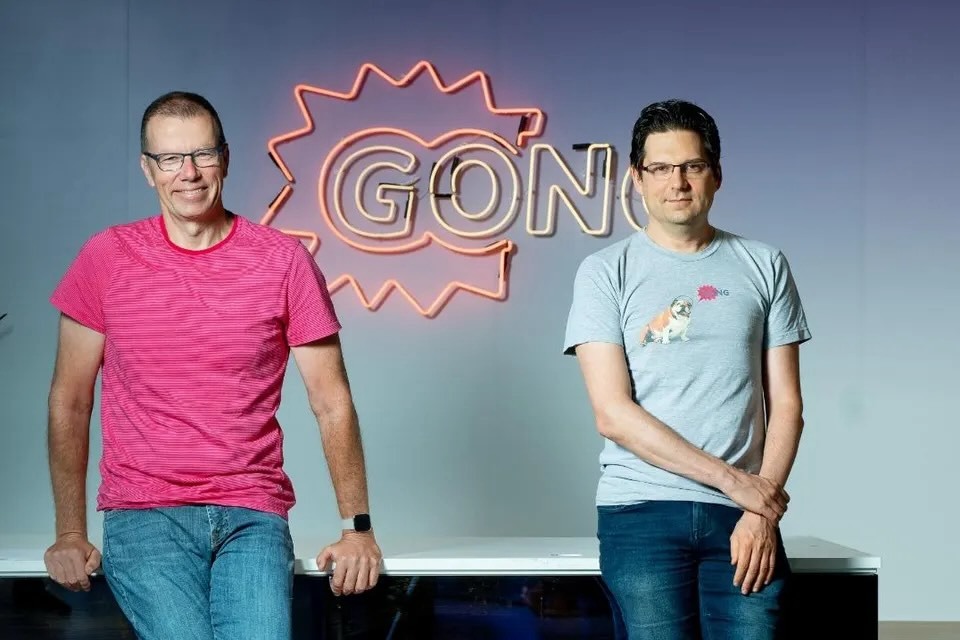Gong product-market fit is a topic that often gets lost amidst the hype of today’s SaaS landscape. It’s easy to assume that a company like Gong, with its sophisticated AI-powered platform and impressive customer base, stumbled upon product-market fit effortlessly. However, Eilon Reshef, Gong’s CPO and co-founder, paints a much more nuanced and relatable picture of their journey.
Many believe a Gong product-market fit discussion revolves solely around the magic of AI, but its success is built on a foundation of deep customer understanding and unwavering founder vision. This reminds us that technology is merely an enabler of value, not the source of value itself.
Table Of Contents:
- Early Obstacles and Founder Conviction
- Building an MVP Focused on Core Value
- Unconventional Indicators of Early Success
- FAQs About Gong Product-Market Fit
- Conclusion
Early Obstacles and Founder Conviction
Gong’s path to product-market fit wasn’t easy. Founded in 2015, long before AI earned its mainstream recognition, Reshef and his co-founder, Amit Bendov, encountered resistance. Early investors expressed concerns about Gong’s ability to differentiate itself from well-established CRMs. They also highlighted anxieties about the privacy implications of call recording and the market’s apprehension toward AI.
However, Reshef and Bendov had convictions fueled by real-world problems, having witnessed firsthand how CRMs often failed to capture the complete picture of sales interactions. This firsthand experience at Sisense, a business intelligence company previously led by Bendov, gave them the conviction to push forward. They trusted in the problem’s universality within the B2B software landscape. This is a key point when you think about product market fit, and I discuss it at length with many SaaS leaders, including the CPO at Clari. They all seem to agree: Identify a problem truly worth solving, even (or especially) if it’s within your own backyard.
Building an MVP Focused on Core Value
Armed with a simple yet powerful pitch deck, which remained relevant even years later, they started by validating their assumptions with potential customers. Reshef underscores the importance of simplicity and directness at this stage, stating, “You could still use this early pitch deck today if you wanted to sell a very, very basic version of Gong.”
Instead of adding many features, they laser-focused on the MVP’s core value: making sales conversations visible and analyzable. Drawing from his extensive product management experience at Webcollage, Reshef adopted a lean startup approach. He strategically postponed nice-to-have features to prioritize delivering customer value above all else.
The Design Partner Strategy That Revealed PMF
Their decision to partner with 12 design partners—salespeople who embodied Gong’s ideal customer profile—proved instrumental in understanding customer interactions and achieving product market fit.
Reshef’s approach to choosing the right design partners emphasizes long-term thinking over short-term gains. He encourages startups to avoid focusing on charging design partners at this early juncture and instead prioritize their ability to grasp the early product’s long-term vision.
He highlights two profiles Gong looks for:
- The Innovator: Driven by the product’s transformative potential rather than just its immediate features.
- The Programmer: Focused on current functionalities, providing pragmatic feedback on how it works in a real-world setting.
Interestingly, Gong distinguishes design partner profiles by where a startup is in their life cycle: “Innovators” for testing hypotheses in the early stages, and “Programmers” for refining and launching new features later on as your company matures.
Unconventional Indicators of Early Success
For Reshef, these 12 design partners ended up offering early Gong product-market fit validation. Here are the three signals he identifies in hindsight:
1. Silence is Golden
Initially, design partners were vocal, demanding the platform record all calls, even though that wasn’t Gong’s initial intention. Once they implemented this feature, something interesting happened: The partners went quiet, happily relying on the tool for every sales conversation. For me, this highlights an important product market fit principle: Address complaints promptly to show that you are listening, but continued silence following feature launches likely points to customer satisfaction.
2. Complaints = Investment
Interestingly, their design partners’ criticism was an unconventional yet powerful early validation. When those 12 partners began expressing frustration about calls not being recorded (a function they hadn’t even built at scale yet.), Reshef knew they had stumbled upon something sticky—a tool users now relied on heavily. This is a good sign for any product revenue leaders.
3. A Willingness to Open Their Wallets
The ultimate validation came when Gong shifted from beta to paid—11 out of the 12 design partners didn’t even flinch before signing a check. Their immediate willingness to pay demonstrated true demand and gave Gong the confidence to scale more aggressively. The story behind Gong’s product-market fit underscores that achieving true success requires a deep understanding of your customer’s pain points, translating complex technologies (like AI) into tangible value, and the tenacity to persevere even in the face of early doubts.
By building their product roadmap based on a balance of their founding vision and customer feedback, they illustrate a product strategy both data-driven and deeply empathetic—one many startups would do well to emulate. This experience solidified my belief that even in a crowded SaaS marketplace, genuinely solving a customer’s pain point always finds a receptive audience—even when that audience complains at first. This is one of the biggest lessons learned from early customer interactions at Gong.
FAQs About Gong Product-Market Fit
What is an Example of a Product-Market Fit?
One prime example is Slack. Prior to its launch in 2013, team communication primarily revolved around email threads and clunky intranets. Slack saw a better way, developing a platform that streamlined internal communication, facilitated file sharing, and ultimately, boosted productivity.
Their success is partly attributable to how effectively they catered their messaging to their initial target audience (tech startups), highlighting pain points they themselves experienced firsthand. By actively participating in communities they sought to serve, Slack could build a loyal following and gain rapid market penetration, cementing their status as the go-to platform for team collaboration. This perfectly illustrates the “solve your own problem” aspect of finding product-market fit—a key aspect in Gong’s journey.
Conclusion
The narrative behind Gong product-market fit isn’t just another tech success story; it serves as a masterclass in aligning founder vision, smart execution, and unwavering customer focus to forge a winning path in the SaaS arena. By uncovering and embracing their “aha” moments concealed within their design partner’s feedback, Gong’s journey shows us that success is often paved with more subtle signposts than we initially perceive. By internalizing these valuable lessons, startup founders can elevate their chances of finding—and ultimately winning—their product-market fit moment.
Subscribe to my LEAN 360 newsletter to learn more about startup insights.





